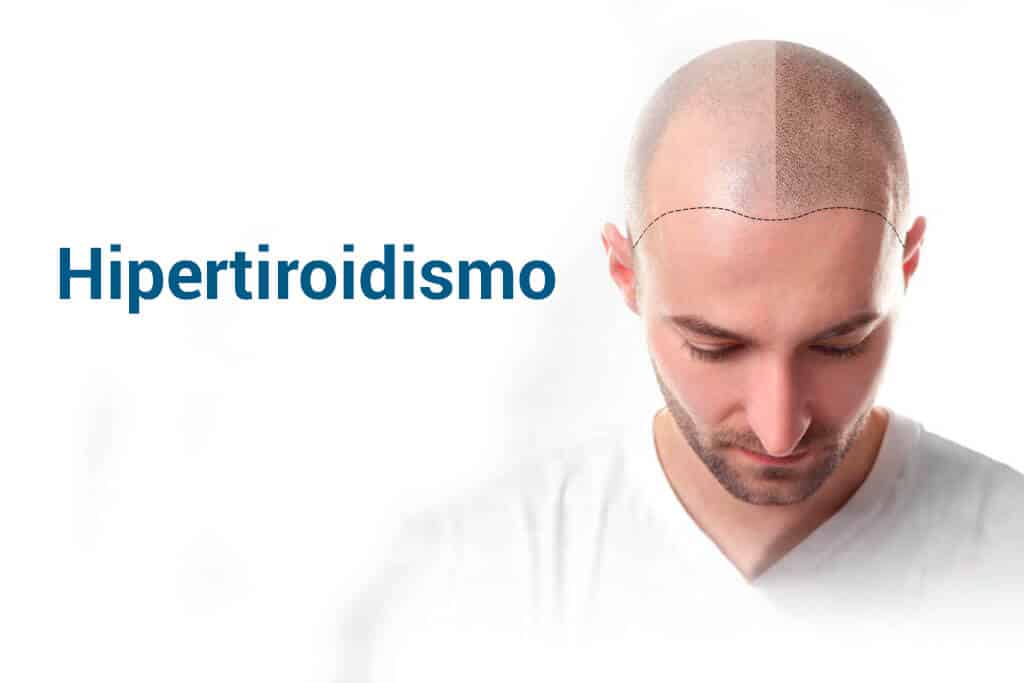HYPERTROIDISM
Hyperthyroidism is a condition that can be temporary or permanent depending on its cause and some other aspects. Although it is not the most common, it can be the cause of hair loss, so it is necessary to diagnose it before proceeding to solve the baldness.
What is hyperthyroidism?
Hyperthyroidism is an impairment of the hormone level in the bloodstream. In this case, we speak of an excessive secretion of thyroid hormones thyroxine (T4) and/or triiodothyronine (T3).
This can be a primary or secondary condition. Primary hypothyroidism occurs when a thyroid disease causes TSH not to be produced. Secondary hypothyroidism is due to the opposite, an excess of TSH.
Know that it also occurs in other animals, especially in older cats.
Do you want to get your hair back? We have the perfect solution for you!
Symptoms of hyperthyroidism
If we suffer from hyperthyroidism, we really have a clinical picture that encompasses all kinds of pathologies and can be very broad, so that diagnosis is essential as the symptoms can easily be confused with those of many other health problems.
Thus, we give with increased appetite, weight loss, common vomiting and nausea, cramps and pains in the stomach and intestines, hair weakness, baldness, intolerance to high temperatures, overpigmented, reddened or very hot skin, excessive sweating, muscle weakness, subtle tremor, fatigue, palpitations, dyspnoea, hypertension, tachycardia, nervousness, irritability, reduced stress threshold, amenorrhoea, decreased libido, eyelid retraction, insomnia, anxiety, lack of concentration...
Causes of hyperthyroidism
Primary hypothyroidism is caused by Graves-Basedow disease (we produce haemoglobins that cause the TSH receptors to malfunction), toxic multinodular goitre (there is a polycloning of the thyroid cells), thyroiditis (sudden destruction of the thyroid that causes HT stored in the blood to come out, as well as making it difficult or impossible for the thyroid to take up iodine), toxic thyroid adenoma (a tumour that produces too much HT) or iodine-induced thyroid adenoma.
Secondary hypothyroidism occurs in cases of thyrotoxicosis due to ectopic secretion of thyroid hormones or excessive ingestion of thyroid hormones (either as part of another treatment or due to an intake error) and trophoblastic tumour.
Hyperthyroidism treatment; can it be cured?
Before starting treatment, it is necessary to make sure of the diagnosis by means of a blood test to determine the level of T4.
Once we have been correctly diagnosed, we can approach the problem in three different ways. We will resort to surgery to remove the thyroid, either partially or completely, seeking to balance the hormone values in the blood. Radioactive iodine can be administered orally instead, if deemed necessary by the specialist in charge. The drugs do not solve the problem, but simply prevent the production of hormones while they are being taken, but the effect disappears as soon as the treatment is stopped, so it is only a temporary solution, with methimazole, carbimazole or propylthiouracil being suitable in this case.
